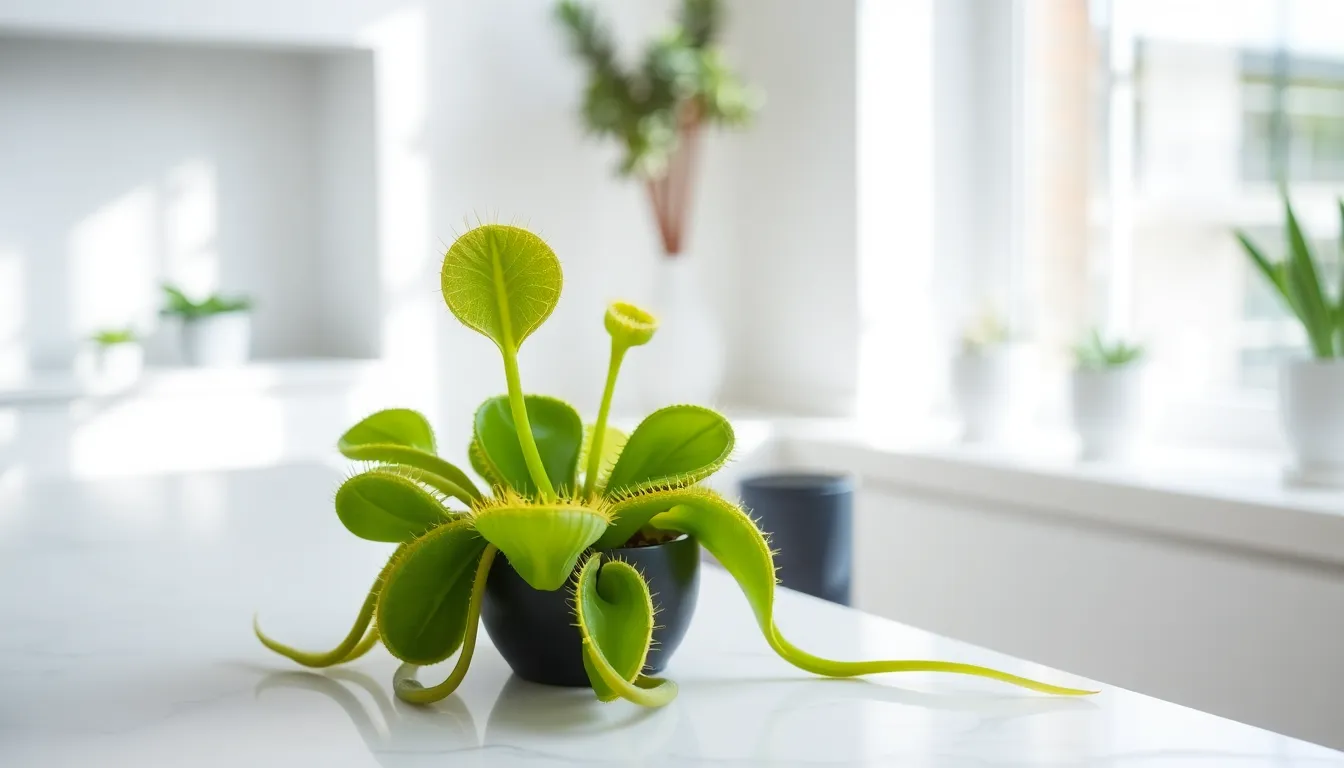Feeding a Venus flytrap can feel like a scene straight out of a sci-fi movie, those green jaws snapping shut like little monsters. But don’t worry. These fascinating plants are far less terrifying than they seem. With the right knowledge and a bit of enthusiasm, you can master the art of feeding your extraordinary houseplant. So, let’s immerse and learn how to serve up the tastiest treats for your leafy predator.
Table of Contents
ToggleUnderstanding Venus Fly Traps

The Venus flytrap is perhaps one of the most iconic carnivorous plants. Native to the subtropical wetlands of the East Coast of the United States, these green beauties sport specialized leaves that snap shut when their sensitive hairs are triggered. This mechanism allows them to catch unsuspecting insects, transforming the plant into a mini predator in your garden or home. Understanding how they thrive is key to ensuring they stay healthy, happy, and efficient in their insect-catching endeavors. They thrive in acidic, nutrient-poor soil and require plenty of sunlight. Get to know your plant’s environment to provide it with the best care.
Natural Diet of Venus Fly Traps
In their natural habitat, Venus flytraps consume a wide range of insects. Flies, ants, beetles, and even spiders all fall victim to their snapping jaws. These plants are not picky eaters: they’re opportunistic feeders, meaning anything that fits in their traps will do. This adaptability not only helps them survive in nutrient-poor soils but also makes caring for them pretty exciting. After all, who wouldn’t want to observe the fascinating process of carnivorous feeding unfold in their living room?
Feeding Schedule and Frequency
Feeding your Venus flytrap requires a bit of finesse. Overfeeding can lead to problems, while underfeeding can stunt its growth. Generally, a schedule of feeding every 2-4 weeks during the growing season (spring and summer) is ideal. Now, if you’re wondering what to fill those traps with, here’s a closer look:
Types of Food for Venus Fly Traps
The trick is to keep it varied. While insects are the typical fare, providing different types will keep the plant happy and ensure it gets a balanced diet.
Insects and Other Prey
Natural insects like crickets, flies, and ants can be perfect. Just ensure they’re small enough to fit comfortably within the trap. If you have trouble finding live insects, frozen ones work just fine. Just thaw and chop them into manageable pieces.
Commercial Food Options
If live prey isn’t an option, consider looking for commercial insect food designed specifically for carnivorous plants. These products often contain the right nutrients and can supplement the plant’s diet.
How to Properly Feed Your Venus Fly Trap
Feeding a Venus flytrap isn’t as daunting as it sounds. Here’s a quick guide:
- Choose the Right Food: Opt for small insects or suitable commercial food.
- Open the Trap: Gently open the trap if it’s closed: if it has recently caught a meal, give it some time to digest.
- Feed the Trap: Use tweezers to place the food inside. Ensure it doesn’t get stuck to the edges, as this could hinder the trap’s ability to close and digest.
- Close the Trap: After placement, the trap will naturally close. If it doesn’t, you can gently squeeze it shut without forcing it.
- Provide Care: Keep the plant in an environment that mimics its natural habitat, high humidity, bright light, and proper watering to support its digestion.
Signs of a Healthy Venus Fly Trap
Monitoring your Venus flytrap’s health is essential, and there are several signs to look for:
- Lively Color: Healthy traps should be bright green, showcasing their vitality.
- Active Traps: Watch for traps that are responsive and snap shut when triggered.
- Consistent Growth: During the growing season, a healthy plant will produce new traps consistently, enhancing its appetite.
- Pests Captured: Observing the plant successfully capturing insects is a good sign it’s being properly fed.
Common Mistakes to Avoid
Feeding Venus flytraps may seem simple, but it’s easy to fall into a few common traps (pun intended):
- Overfeeding: More isn’t always better. Too much food can lead to trap rot or disease.
- Wrong Size Prey: Ensure that the prey isn’t too large or small. A good rule of thumb is to use insects that are around one-third the size of the trap.
- Neglecting Water Needs: These plants thrive in damp conditions. Lack of moisture can cause them stress and affect their ability to capture prey.
- Skipping Dormancy: Remember, Venus flytraps need a dormant period. Insufficient dormancy can impact health and future growth.


